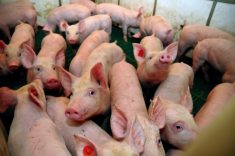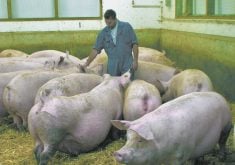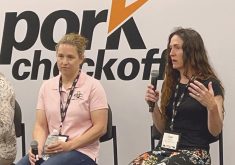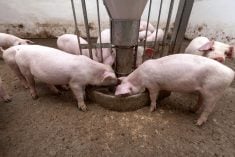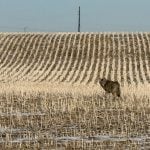Glacier FarmMedia – Canada now has a laboratory officially recognized as a world leader in African swine fever (ASF).
The World Organization for Animal Health (OIE) said last month that the National Centre for Foreign Animal Disease in Winnipeg will be a reference laboratory to deal with ASF.
“(Reference laboratories) are internationally recognized centres of expertise on specific animal diseases,” the Canadian Food Inspection Agency said in a release.
Read Also
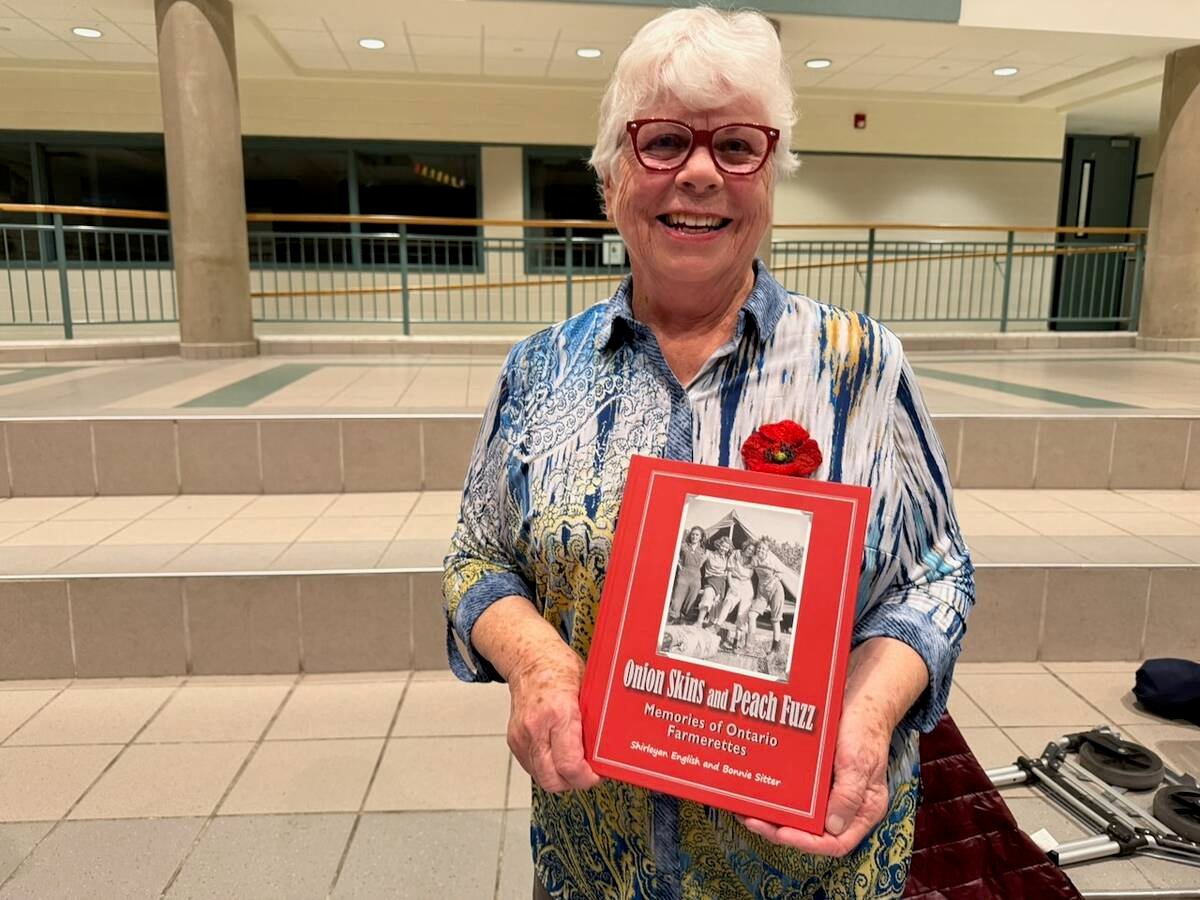
Women who fed a nation
More than 40,000 young women supported the war effort between the 1940s and early 1950s, helping grow and harvest crops amid labour shortages. They were called Farmerettes.
“These laboratories play a critical role in the international monitoring and control of animal diseases, in applied research, as well as in providing support for diagnosis, training and advice to member countries.”
Why it matters: Canadian expertise will be crucial in controlling an ASF outbreak should it occur.
ASF is a highly contagious disease and fatal to pigs. Outbreaks have occurred in China, Vietnam, Southeast Asia, Poland, Eastern Europe and Germany, where it has affected and, in some cases, devastated pig herds. It cannot be transmitted to humans and is not a food safety risk.
In China, it’s estimated that ASF reduced the nation’s pig herd by 40 per cent in 2019. The pig industry was forced to cull millions of swine to control the disease.
Last year, Germany stopped pork exports to China and other countries because of bans related to ASF. Bans are often connected to the persistence of ASF. The disease can live for weeks or months in uncooked meats and cured pork, allowing it to cross borders.
A significant number of German farmers left the pig business in 2021, leaving eight percent fewer operations compared to 2020. The country’s swine herd dropped to the lowest level since 1996.
ASF was found at a small farm in Germany last month, only 50 kilometres from the French border. Previously, the disease was mostly concentrated in eastern Germany.
“Once again, the fear has been confirmed that selective spread of ASF in Germany cannot be completely prevented,” said ISN, a German hog industry group.
ASF arrived in the Americas last August, when it was detected in several pig herds in the Dominican Republic.
Livestock disease specialists say it’s a safe bet ASF will eventually arrive in Canada.
“It’s probably not a matter of if. It’s probably a matter of when…. And are we going to identify it fast enough?” said Matheus Costa, a swine health expert at the Western College of Veterinary Medicine in Saskatoon.
There’s also the issue of wild pigs. Once ASF gets into that population, the animals become a reservoir and persistent vector to spread the disease.
With the help of experts at the CFIA lab in Winnipeg, Canada’s pork industry has been preparing for an ASF outbreak for years.
As part of that plan, the federal government has been working on zoning protocols and talking to other countries to maintain pork exports if ASF appears in Canada.
Last fall, Canada and Vietnam agreed to limit trade bans to geographic zones, such as a municipality or part of a province, where ASF is present.
“This arrangement would serve to minimize trade impacts to the Canadian swine sector while protecting the swine populations in both countries,” the CFIA said.
Canada has a similar zoning arrangement with the United States in the event of an ASF outbreak.
– This article was originally published at The Western Producer.








